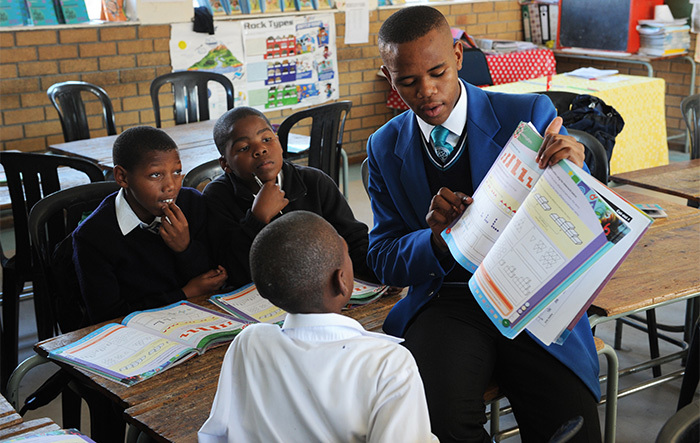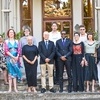Club promotes homework culture at Khayelitsha school
30 June 2014 | Story by Newsroom
Occupational Therapy (OT) students studying child learning development recently extended the scope of their involvement with a local school to include the establishment of a homework club for Grade 6 learners.
This development follows the developmental screening of Grade R learners, which took place for the first time towards the end of last year at Intshayelelo Primary School. Since then the screening has become a fixture in the final year OT curriculum. Intshayelelo is one of the six schools in Khayelitsha working with UCT's School Improvement Initiative (SII) to improve the quality of education received by its learners.
The homework programme deepens the collaboration between health sciences and education initiated by the Grade R screening. Furthermore it has led to a partnership between two SII schools as Grade 11 learners from the nearby Centre of Science and Technology (COSAT) '“ a high school '“ act as homework mentors.
Started in March this year, the homework programme runs on a Monday and Thursday after school and includes an hour of play during which the primary school students play sport or chess. When the high school students arrive, they assist their junior counterparts with their homework.
Homework is not being done
Following a move to increase their focus on community development, OT students approached various role players in the school community '“ parents, teachers and learners '“ to find out where there were areas of concern.
"There was a problem around the culture of homework at the school. Teachers had a view that homework wasn't going to be done and in many respects it wasn't being done at home. Teachers would trail behind in the curriculum because they were allowing a great deal of time for homework to be completed in class, or going over concepts that should have been consolidated in the space provided for homework,' explained OT lecturer Liesl Peters.
The Grade 6 results for the systemic tests, annual numeracy and literacy tests for Grade 3 and 6 were also poor and all role players believed that with a homework programme in place, these results could be significantly improved upon.
According to Kathryn Wishart, an OT student, parents indicated that they did not understand the current curriculum. "We also didn't want to add to teacher's load, so we approached Patti Silbert (SII project manager) to find out who could champion our homework programme and act as mentors."
Silbert contacted the principal of COSAT, Phadiela Cooper, who recruited 26 of her students to act as homework mentors at Intshayelelo. Half of this group of high school learners mentor on Mondays, while the others mentor on Thursdays. Each mentor has six to eight Grade 6 learners they are responsible for supporting.
Perfect for the job
Wishart pointed out that the COSAT learners are perfectly suited to mentor the younger learners. Although the older learners came from primary schools with very limited opportunities, the many extracurricular and academic options that are presented at COSAT have changed their career expectations. "Many of the students from COSAT have aspirations to be doctors and lawyers and therefore they can serve as role models to the Grade 6 learners. An important aspect of the homework club is for the mentors to encourage and inspire them to dream big," she says.
The plan is for the school to ultimately take ownership of the homework club and expand it to include other grades without the help from UCT OT students.
Story by Abigail Calata. Image by Michael Hammond.
 This work is licensed under a Creative Commons Attribution-NoDerivatives 4.0 International License.
This work is licensed under a Creative Commons Attribution-NoDerivatives 4.0 International License.
Please view the republishing articles page for more information.










